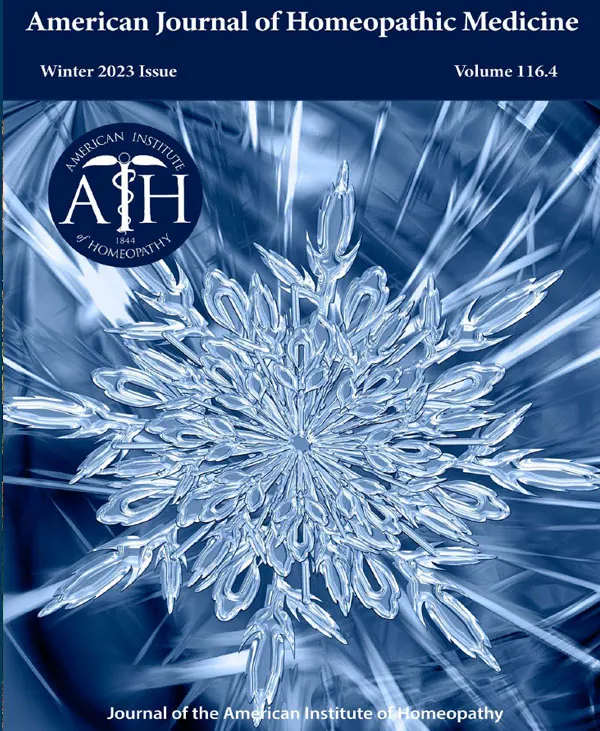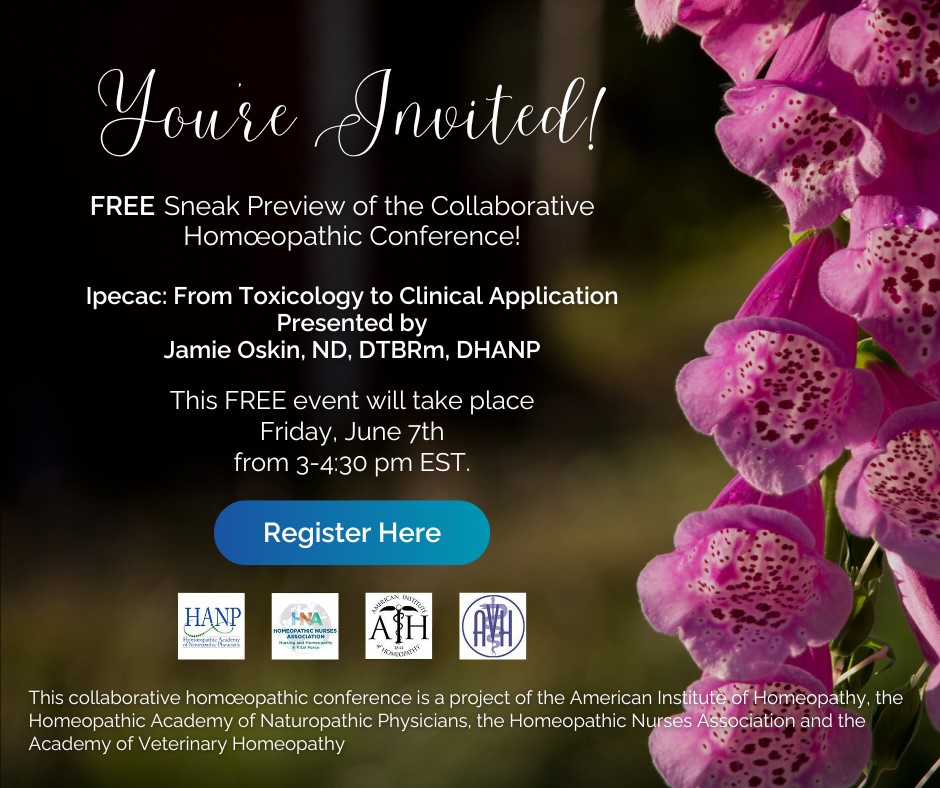
Editorial: The State of Homeopathy
“FROM the time the law of Copernicus was discovered and demonstrated, the mere recognition of the fact that the sun does not move, but the earth, overturned the entire cosmography of the ancients. It was possible, by rejecting the [newly discovered] law, to hold fast to the old view of the motion of bodies; but unless the law was rejected, it became impossible, apparently, to continue in the teaching of the Ptolemaic worlds. And yet, even after the discovery of the law of Copernicus, the Ptolemaic worlds were still for a long time taught … Long and stubbornly the struggle between the old view and the new went on in the domain of physical philosophy.”
Tolstoi, Lyof N. The Complete Works of Lyof N. Tolstoi. War and Peace. v.5-6. Thomas Y. Crowell Co. Publishers. New York. 1899. p. 287
Dear Reader,
Welcome to the Spring issue of the AJHM journal!
Reflecting on the state of homeopathy in the world, it is amazing to note that our influence has been even this much to this day—LMHI has members in 76 countries and there are good schools teaching homeopathy around the world. There are also scientific review documents (white papers) clearly demonstrating the effectiveness and plausibility of homeopathy for quite a few conditions (see LMHI, AIH, and AFHC documents below). (1,2,3) And yet, homeopathy continues to be seen in a most unfavorable light by much of the medical community. Without going into the intimate details, historical, institutional, and economic, of why exactly this is so, we can point to the simple fact that the characterization of homeopathy by many of its skeptics leaves out much of the understanding of what it is that one is “skeptical” about.(4) Also, the motivations behind attacks on homeopathy have come out in debates such as this one in the UK Parliament.(5) To consider the claims of homeopathy fairly would cause a great deal of cognitive dissonance in the proponents of scientism currently embraced so vehemently by its adherents. In other words, it is the business of those who believe the “science is settled” and in “scientific consensus.”(6) (In contrast, Hahnemann was not averse to using “old school” authorities for valid toxicological observations that were later added to the database of the proving. As an example, we can look closely at the Digitalis purpurea references 15-51 in T.F. Allen’s Encyclopedia of Pure Materia Medica.) Furthermore, the claim that the principle of similars does not “exist” in the current understanding in biology ignores the extensive “FROM the time the law of Copernicus was discovered and demonstrated, the mere recognition of the fact that the sun does not move, but the earth, overturned the entire cosmography of the ancients. It was possible, by rejecting the [newly discovered] law, to hold fast to the old view of the motion of bodies; but unless the law was rejected, it became impossible, apparently, to continue in the teaching of the Ptolemaic worlds. And yet, even after the discovery of the law of Copernicus, the Ptolemaic worlds were still for a long time taught … Long and stubbornly the struggle between the old view and the new went on in the domain of physical philosophy.” Tolstoi, Lyof N. The Complete Works of Lyof N. Tolstoi. War and Peace. v.5-6. Thomas Y. Crowell Co. Publishers. New York. 1899. p. 287 pharmacological literature on the hormesis effect and the use of “unconscious homeopathy” in regular medicine.(7,8) Modern science’s reductionistic approach reminds one of the limitations of seeing just a part and taking it for the whole—one day the parts will have to be puzzled together to properly understand the whole; until then argument and rancor is the order of the day!(9)
Given the political, economic, institutional and emotional investment in the current biomedical paradigm, this brings us to the point that it can only change when the problems associated with following this paradigm become unbearable enough, which is becoming evident in the case of an epidemic rise in the prevalence of inflammatory disease as a result of the assault on the microbiome, and the consumer burden of healthcare spending that is illustrated by Ron Whitmont, MD, in his article “Pandemic Lessons” in the current issue of this journal, and in the fact that medical error is the third leading cause of death in the US.(10,11)
It has become abundantly clear that the current system of healthcare has been and is in crisis.(12) What to do then as far as homeopathy goes? As has been the imperative of the AIH Board, we simply should continue to follow the best trajectory we know to help to develop our profession, focusing on important issues: our Hahnemannian methodology, our basic science and clinical research, our willingness to collaborate with different groups in our homeopathic community and other nature-loving groups both nationally and internationally, our commitment to education and the quality of homeopathic medicines, our willingness to engage in the political and legal defense of homeopathy, and, especially, our promotion of the availability of homeopathy to the consumer.
We hope you will join us for our joint conference at UConn Medical School in Connecticut this year with the homeopathic research group GIRI and the Faculty of Homeopathy, which will feature renowned homeopathic researchers from around the world over a three-day weekend beginning October 20th for the unbeatable price of $60 for the whole conference! Learn more about this conference.
 Respectfully yours,
Respectfully yours,
Alex Bekker, MD, ABIHM
President, AIH/Editor, AJHM
References
- Scientific Framework of Homoeopathy. 2021. https://www.lmhi.org/file/ scientific_framework/Scientific%20Framework%20of%20Homoeopathy%20book_2021.pdf
- AIH Guide to Homeopathic Research. https://homeopathyusa.org/guide-to-research.html
- AFHC. Why Homeopathy Matters in America. Compendium of Homeopathic Research. https://homeopathychoice.org/wp-content/uploads/2023/03/Homeopathy-Research-Compendium-Final.pdf
- https://www.skeptic.com/downloads/Alternative_Medicine_by_Harriet_Hall.pdf
- https://hansard.parliament.uk/Commons/2017-03-29/debates/E00F8D1B-EC44-4231-AEFC-7991C8F34615/HomeopathyAndTheNHS. “To put things in a global perspective, some 450 million people use homeopathy each year. If homeopathy did not work, why would so many people choose to use it and carry on using it? It is a global medical system, the second largest medical system in the world, and is used particularly in very poor communities, which I will come on to … David Treddinick. There is insanity about this subject. The amount of money spent on homeopathic prescriptions in the health service is about £110,000 per annum. So why are those who are against it so fanatically against it? What is it that gives them the swivel-eyed look? Why do they take so much trouble to rub out an alternative at a time when the mantra of the Government is patient choice?”
- Mol. Imaging Biol. 2009 Sep; 11(5): 293 Consensus Science and the Peer Review. But Michael Crichton explains it best when he said: “I regard consensus science as an extremely pernicious development that ought to be stopped cold in its tracks. Historically, the claim of consensus has been the first refuge of scoundrels; it is a way to avoid debate by claiming that the matter is already settled. Whenever you hear the consensus of scientists agrees on something or other, reach for your wallet, because you’re being had.” And he continues: “Let’s be clear: the work of science has nothing whatever to do with consensus. Consensus is the business of politics. Science, on the contrary, requires only one investigator who happens to be right, which means that he or she has results that are verifiable by reference to the real world. In science consensus is irrelevant. What are relevant are reproducible results. The greatest scientists in history are great precisely because they broke with the consensus. There is no such thing as consensus science. If it’s consensus, it isn’t science. If it’s science, it isn’t consensus. Period.”
- Calabrese, EJ, Baldwin, LA. Hormesis: The Dose-Response Revolution. Annual Review of Pharmacology and Toxicology. Vol. 43:175-197 (Volume publication date April 2003)
- Solanto, MV. Neuropsychopharmacological mechanisms of stimulant drug action in attention-deficit hyperactivity disorder: a review and integration. Behavioral Brain Research. V. 94. Issue 1. July 1998. p. 127. “ADHD is characterized by three major symptom clusters—inattentiveness, impulsivity and hyperactivity—which are differentially present in the three subtypes of the disorder recognized in the DSM-IV [1]. Numerous well-controlled studies have shown that the most widely used stimulants, d-AMP (Dexedrine), and MPH (Ritalin), are highly effective in alleviating all three clusters of symptoms … “ [Ed. bold]
- The Blind Men and the Elephant. https://www.peacecorps.gov/educators/resources/story-blind-men-and-elephant/ [which one of us is not “blind” as far as what is the nature of reality?!]
- Kuhn, TS. “The Structure of Scientific Revolutions: 50th Anniversary Edition”, p.152, University of Chicago Press. “Probably, the single most prevalent claim advanced by the proponents of a new paradigm is that they can solve the problems that led the old one to a crisis.”
- Makary M, Daniel M. Medical error—the third leading cause of death in the US. BMJ 2016; 353
- America’s Healthcare Cost Crisis Lyford, S., Lash, TA. Generations. Volume 43, Supplement 1, Winter 2019-2020, pp. 712(6) “The decades-long upward trajectory of U.S. healthcare costs has made healthcare unaffordable for families in America, and puts an economic strain on government and businesses” https://www.ingentaconnect.com/contentone/asag/gen/2019/00000043/a00104s1/art00002
About the AJHM
The American Journal of Homeopathic Medicine (AJHM) is a peer-reviewed scientific journal, specifically intended to meet the needs of physicians involved in the specialty of homeopathy. The editor invites original manuscripts, feature articles, research reports, 'Homeopathic Grand Rounds' cases studies, abbreviated case reports for 'Clinical Snapshots,' seminar reports, and position papers that focus on homeopathy, as well as book reviews and letters to the editor. Click below to subscribe to the Journal.
Latest Issue of the AJHM

AJHM – Winter 2023
Volume 116 Number 4
Table of Contents
- Editorial: In this Issue
- Homeopathic PuZZle?
- A Case of Erectile Dysfunction and Anejaculation in a Diabetic Patient
- Iron and Its Salts: Materia Medica and Illustration
- Suppression in the Organon
- An Appreciation of Jacques Jouanny’s Life and a Review of His Opus “The Essentials of Homeopathic Therapeutics”


